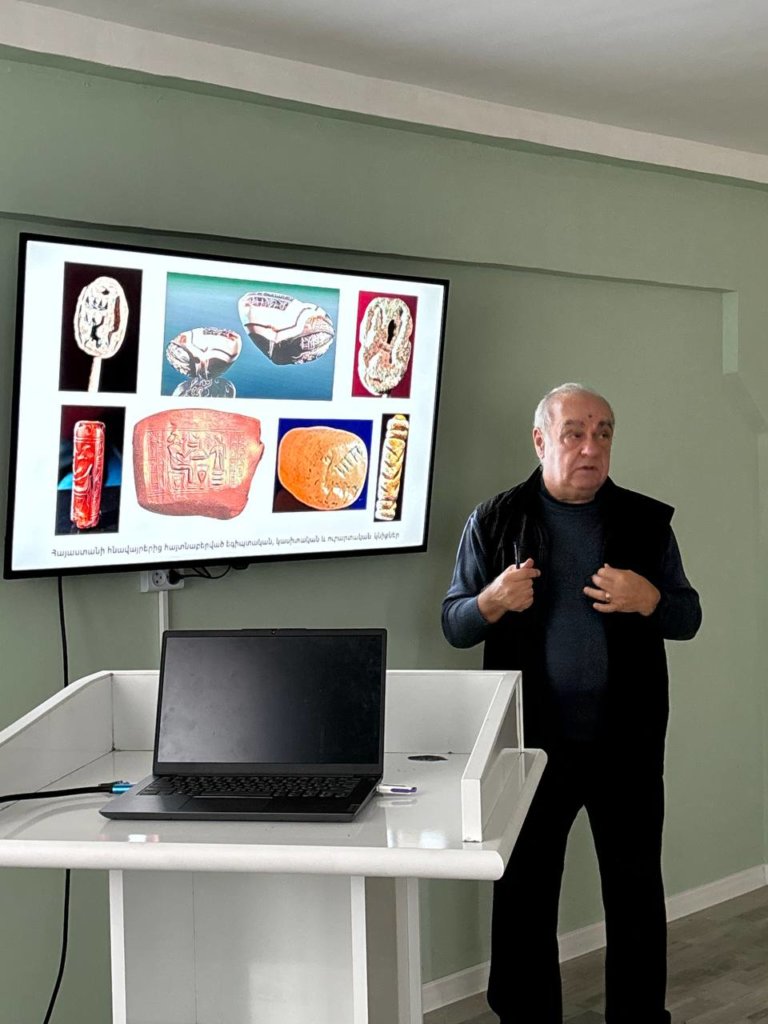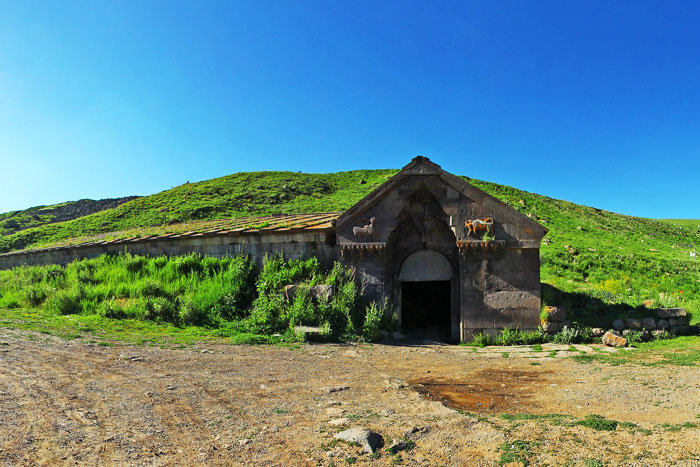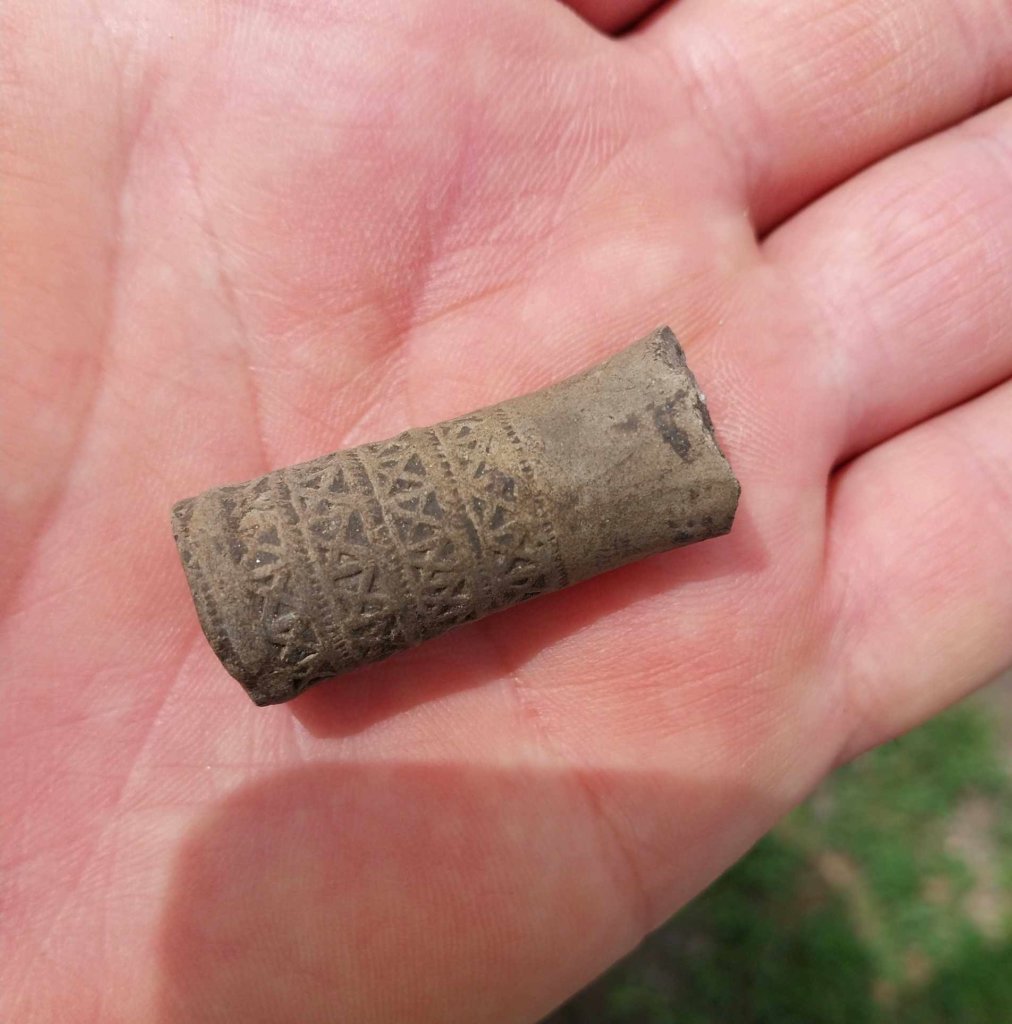“Our generation must honor the generosity of the Middle Ages to the sculptor, the miniature painter, the architect, the founder of the new Gladzor school, and we must create an opportunity for the youth to get to know him…”
<span;>Academician Varazdat Harutyunyan
<span;>Referring to Momik’s activities, it is impossible not to mention Syunik Metropolitan Stepanos Orbelyan, as due to the efforts of these two prominent figures were conditioned the steady rise of spiritual and cultural life with a completely national character.
<span;>Under the patronage of Stepanos Orbelyan, Momik built the St. Gregory the Illuminator Church in Tatev which is considered to be his first major architectural work. It is vaulted, built instead of a church destroyed after the earthquake in 1138. The works were completed in 1295.
<span;>St. Astvatsatsin Church in Areni was built of brown tuff and has a central dome. It seems to have perched on a hill on the left bank of the Arpa River. Today, it retains its dominant position over its surroundings.
<span;>As we enter from the west, Momik’s frescoes and sculptures appear in front of us. On the front stone of the western entrance is the St. Virgin Mary with the baby Jesus. Our Lady is depicted as a heavenly queen. In the inscription left on the Church, Momik mentions the earthquake that took place in 1321.
<span;> Immediately after the completion of St. Astvatsatsin, on the instructions of the Orbelian Princes, Momik began to reconstruct the western vestibule of the earthquake-stricken Noravank main church, where the author’s hand-made sculptures are placed. Nowadays, the statue of God the Father entering the porch is still very popular, with his glorious beard, big, oval eyes, curly hair, holding his right hand up for blessing, and holding his left human head at chest level.
<span;>Some experts believe that this is the scene of Adam’s creation. The human-like depiction of God the Father is unique, which mostly emphasizes the unique talent of the sculptor of the vestibule. Beneath the beard of the God is the symbol of the Holy Spirit, – a cross with a crown of light, taken in a circle, with a dove upside down, the beak of which touches the lips of Adam in the hand of God.
<span;>On the right edge of sculpture is an angel looking to the Fr. Christ.
<span;>On the left, below the blessing right hand, is the crucified Christ, on the left of which is the Virgin Mary, on the right is the Evangelist John, and on the bottom is the Daniel Prophet lying, with his hand towards the cross. On both sides of the Head of the Christ are the symbols of the sun and the moon. The sculpture of the Holy Spirit and Jesus Christ descending from God the Father to Adam embodies the idea of the inviolability of the Holy Trinity.
<span;>Momik, using all his skill and experience, actually builds a new courtyard, decorating it with highly valuable sculptures.
<span;>Evidence of the sculptor’s talent are a number of khachkars typical of medieval Armenian culture, two of which bear the name of Momik. Both of these works are among the best works of khachkar art. One of khachkars is dedicated to Stepanos Orbelyan who sculpted it immediately after the historian’s death in 1304, the other is the one built by the order of Princess Tatma Khatun of Syunik, sculpted in 1308. The lower part of the khachkar was located in St. Grigor Church, and the upper part was found in 1983, during the preparations for the celebration of the 700th anniversary of Gladzor University during the restoration works in the Noravank monastery complex. Later the whole khachkar was transferred to Yeghegnadzor Geological Museum.
<span;>The two-storey tomb-church of Burtelashen in Noravank is also one of the masterpieces of Momik’s architectural thought. It is decorated with many delicate and rich sculptures of human, plant and geometry. It was Momik’s last work, which, after his death, was completed by the master’s students.
<span;>The fruit of Momik’s thought was the Zorats Church, the plateau on the western side of which, according to some sources, was the training ground of the ruling (military) regiment. The structure with its triangular niches has similarities with Areni St. Astvatsatsin Church.
<span;>Momik died and was buried in Noravank. His students erected a modest khachkar on the grave of their talented master with the following inscription: “REMEMBER MEMORY OF MOMIK THE CHRIST SLAVE WITH MERCY” (1333).







